You will be met at the airport by our representative and introduced to your chauffeur guide who will be accompanying you on your tour. The guide will remain with you until your stay unless we have advised you otherwise.
Drive time from the Colombo international airport to Negambo is approximately 30 minutes.
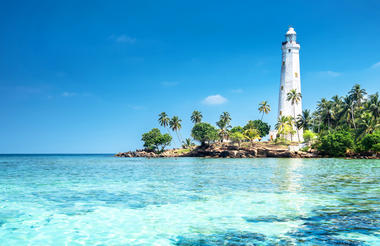
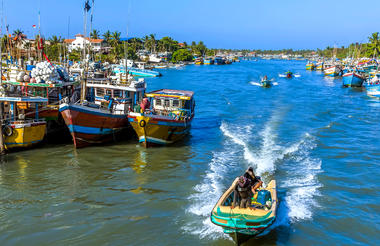
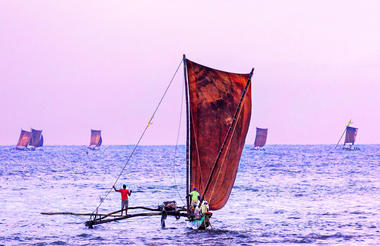
Transfer from Negambo to Dambulla- Drive time is approximately 3 hours.



Sigiriya Rock Fortress
Sigiriya (Lion Rock) Referred by locals as the Eighth Wonder of the World this ancient palace and fortress complex has significant archaeological importance and attracts thousands of tourists every year. It is probably the most visited tourist destination of Sri Lanka. Sigiriya rock plateau, formed from magma of an extinct volcano, is 200 meters higher than the surrounding jungles. Its view astonishes the visitors with the unique harmony between the nature and human imagination. The fortress complex includes remnants of a ruined palace, surrounded by an extensive network of fortifications, vast gardens, ponds, canals, alleys and fountains. In the 3th century BC the rocky plateau of Sigiriya served as a monastery. In the second half of the 5th century king Kasyapa decided to construct a royal residence here. After his death Sigiriya again became a Buddhist monastery until the 14th century, when it was abandoned. The main entrance is located in the northern side of the rock. It was designed in the form of a huge stone lion, whose feet have survived up to today but the upper parts of the body were destroyed. The western wall of Sigiriya was almost entirely covered by frescoes, created during the reign of Kasyapa. Eighteen frescoes have survived to this day. The frescoes are depicting nude females and are considered to be either the portraits of Kasyapa’s wives and concubines or priestess performing religious rituals. One of the most striking features of Sigiriya is its Mirror wall. For those who are not comfortable with heights or have problems climbing we suggest the gardens of Sigiriya which are amongst the oldest landscaped gardens in the world. They are located in the western part of the rock with bridges, fountains, as well as surface and underground water pumps.
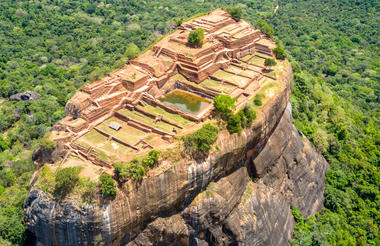
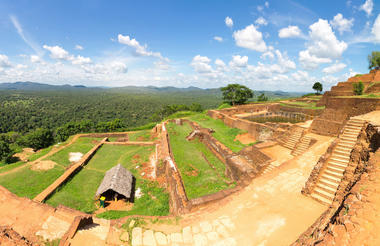
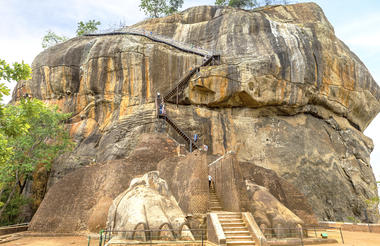
Morning
Polonnaruwa was the 2nd capital city of Sri Lanka, built in the 11th and 12th centuries AD, and which is also a World Heritage Site. Within the ruins of the Royal Palace, the Gal Viharaya, there are four splendid statues of the Buddha in 'Upright', 'Sedentary' and 'Recumbent' postures carved out of rock. In addition, the remains of stunning buildings including the Audience Hall, the Lotus Bath, king Parakramabahu's statue, and the Parakrama Samudraya lake built by King Parakramabahu the great, provide an insight into this great historic city. Polonnaruwa is also home to monuments of famous places of worship including the Shiva Temple, the Lankathilake, the Watadage, the Galpotha, the Kiri Vehera and the remains of a former Temple of the Tooth Relic, now found in Kandy. Approximately a one hour drive from Sigiriya, we recommend most clients visit Polonnaruwa in conjunction with Sigiriya during a stay in the Cultural Triangle. Visiting Polonnaruwa in the morning combines well with an afternoon Jeep Safari from Harbarana, in one the close-by national parks to see wild elephant and the vast array of local wildlife.
Minneriya National Park
The Minneriya Tank was created by King Parakarambahu at the height of Polonnaruwa’s glory as the capital of Sri Lanka. The national park based largely around the huge tank (reservoir) was created rather more recently but serves as an important gathering place for Sri Lanka’s large population of elephants. It is a great place for elephant spotting all year round – though as the dry season makes water scarce between June and September, more and more elephants gather on the shores of Minneriya Tank.
Indeed by late August and September, the awe inspiring site of up to 300 elephants can often be seen, in a phenomenon known as ‘The Gathering’. It is the largest concentration and gathering of Asian elephants that can be seen anywhere in the world. Watching baby elephants playing with each other, bull elephants tussling for dominance and the great matriarchs surveying the scene is not a sight you are likely to forget in a hurry. Aside from the elephant, Minneriya is also home to some 23 other species of mammals: some, like the Deer and Sambur you will see, some like the Leopard and the Sloth Bear will probably prove elusive. The arid dry zone is a paradise for many species of Lizard and you will see them here in all their technical colour brilliance if you look carefully enough, as well as snakes like the Indian Python and the Mugger Crocodile. Above all, of course, are Sri Lanka’s wonderfully varied bird population. Among the 150 or so species, particular favorites of ours you may see in Minneriya include the beautiful painted stork, and various other bird species.
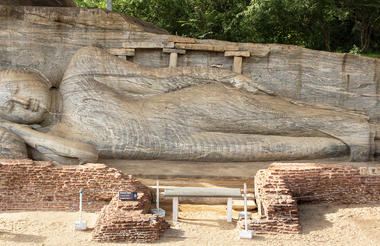


Morning
Afternoon
The Dambulla Rock Temple, was donated by king Walagambahu in the 1st century BC to Buddhist monks. Dambulla is a World Heritage Site and is the most impressive of Sri Lanka's cave temples. The complex of five caves with over 2000 sq. meters of painted walls and the ceiling is the largest area of cave paintings found in the world. These caves contain over 1500 images of the Buddha of which the largest is the colossal figure of the Buddha carved out of rock spanning 14 meters. Close to the town of Dambulla this attraction is easily accessed although it requires walking up a considerable number of steps to reach the caves from the road. If you are a little short of time, a visit to the Dambulla rock temple can be combined with travelling to or from the Sigiriya area.



Morning
Kandy was the last capital of the Sri Lankan kings, and is a World Heritage Site. The name Kandy conjures visions of splendour and magnificence. Many of the legends, traditions and folklore are still lovingly kept alive. Drive around the Kandy Lake built by the last Sinhala king Sri Wickrama Rajasinghe in 1798.
In 1542 the Tooth Relic was brought to the city , stimulating a flurry of new religious building- a two storey for the relic itself and 86 houses for the monks. By 1602 the city had probably taken the form. Kandy was repeatedly attacked by the Portuguese, Dutch and the British and been rebuilt several times.
The area with the Temple of the Tooth and associated buildings, a world heritage site, is the chief focus of interest. The Udmale (upper storey) houses the relic which is caged behind gilded iron bars and a series of 7 seven smaller caskets. Ceremonies start at 0530, 0930 and 1830. These are moment the temple comes to life with pilgrims. One would need to be dressed appropriately for the temple as any other religious building. Kandy is perhaps most famous however for the annual Perahara, a most magnificent site which sees the scared tooth relic take to the streets accompanied by dancers, drummers and most significantly elephants dressed in all their finery and adorned with lights. The parade which goes through the streets of Kandy builds into a spectacular procession over consecutive nights with the number of elephants growing each night. The procession normally takes place annually at the end of July or early August.
Peradeniya Royal Botanical Gardens
This botanical garden was first built as a pleasure garden by a Sinhala king and was expanded by the British during the period of colonial rule. Royal Botanical Garden, Peradeniya (5.5 km west of Kandy) is renowned for its collection of a variety of orchids and includes more than 4000 species of plants, including of orchids, spices, medicinal plants and palm trees.The Botanic Gardens crested in 1371 when King Wickramabahu III kept court at Peradeniya near Mahaweli river. This was followed by King Kirti Sri and King Rajadhi Rajasinghe. A temple was built on this location by King Wimala Dharma, but it was destroyed by the British when they were given control over the Kingdom of Kandy. Alexandar Moon then created the botanical gardens in 1821. The Botanical Garden at Peradeniya was formally established in 1843 with plants brought from Kew Garden, Slave Island, Colombo, and the Kalutara Garden in Kalutara.
The classical Avenue of Palms is located in this Garden. One tree with a significant history is the Cannonball Tree planted by King George V of the United Kingdom and Queen Mary in 1901. During the Second World War, the Botanical Garden was used by Lord Louis Mountbatten, the supreme commander of the allied forces in the South Asia, as the headquarters of the South East Asia Command.



Cooking Lesson
After a relaxed breakfast, at approximately 10:30 visit the organic kitchen garden with the Chef who, along with the gardener will explain the produce and some of the spices that is grown at Rosyth. On your return to the kitchen, you will have the opportunity to cook authentic Sri Lankan curries. You may be joined by other guests. The maximum number of guests is eight. The menu has been designed to include ingredients which are available in Europe. Your hands-on cooking class will include a fish or chicken curry and three other vegetable curries and a traditional salad. Sit down for lunch in the dining room in the canopy of the trees with the curries that you have cooked and enjoy your lunch with the rice and poppadum's. You will have the opportunity to take away the recipes to replicate at home. The curries: The main curries are Chicken, Fish or Mushroom. Green bean, Lentil and spinach, aubergine & Gotkola sambal. When you sit for lunch we will serve you red or white rice, popadoms and homemade chutneys. You will have the recipes to take home and we suggest you purchase the spices from a supermarket before you fly home
Rosyth Artisanal Tea
Rosyth Estate House has begun a journey to become an organic, artisanal producer of Sri Lankan tea. Removing mechanisation from the processes they have started to produce hand rolled tea which is carefully crafted on the estate by our local artisans. This project is wholeheartedly community focused as we look to improve the economic sustainability of our valley.
Depending on the time you have and your interest, please feel free to dip in and experience the different aspects of becoming an artisanal tea maker.
Join the ladies in our tea gardens which are spread around the estate. They start early (about 6am) but you might want to start a bit later. They will teach you the art of plucking; just buds or two leaves and a bud. Just buds - "golden tips" or "silver tips," tea tips are the small, unopened leaves of the tea plant are the sweetest part of the tea leaf. This is a great chance to interact with our local community and also understand the challenges that the ladies have in picking the freshest leaves. You will be unlikely to grab a tea bag again.
If you are interested in learning how artisan tea is made, you will have the opportunity to hand roll the leaves, return to watch the next process where the tea is fermented and then dried . End with tasting the different teas that they produce,
Rosyth Estate Walk
Rosyth is a small working estate. Tea is plucked by hand and sold to the nearby tea factory, whilst latex is tapped, treated and sold to a local rubber factory. Coconuts, fruits, spices and other produce are grown on the estate and are, wherever possible, used as part of our menus.
Guests are free to explore the estate, join the ladies plucking two leaves and a bud from the tea bushes or see how the rubber is tapped. Equally take a walk down to the river and discover the small waterfall or to the local paddy fields and enjoy meeting with the local villagers. The Estate contains walking trails, mountain biking routes and our staff will be happy to guide you through the tea terraces, rubber plantation and paddy fields.



Morning
Estate activities
Afternoon
Rosyth Artisinal Tea
Morning Scenic Train Journey from Gampola to Nanu Oya (ON AVAILABILITY)
The train journey is on the bucket list of most travellers to Sri Lanka. Why is the Gampola to Nanu Oya train journey so amazing? The views on both sides of the rail are breathtaking but it is a journey on one of the most charmingly decrepit railway systems in the world which reinforces the desire to travel in a modicum of discomfort! We recommend that you are ask your hotel the night before your trip to put together a packed lunch for the journey.
The railway journey Service began in 1864 with the construction of the Main Line from Colombo to Ambepussa and was extended to the high tea country. At Rambukkana, the line begins a steep climb into the hills. From Rambukana to Kandy, at Kadugannawa the track runs along the edge of sheer cliffs, allowing passengers a view of Batalegala (Bible Rock).
The Main Line From Colombo then continues climbing through tea country, connecting market centers at Gampola and Hatton before reaching Nanu-Oya. This is the connection to the former colonial resort of Nuwara Eliya, still visited for its temperate climate, classic hotels and British-style gardens. The Main Line reaches its summit at Pattipola, 6,226 feet (1,898 m) above sea level, before descending via Ella and Bandarawela to Badulla. The spectacular tea gardens, mountains, valleys and waterfalls.
During the train journey, you can walk around the carriages, go to the toilet, visit the food stand or purchase some snacks from vendors who wander about. Don’t miss the opportunity to take in the view via the open doorway, tea plantations, villages and bridges with eerily huge drop-offs.
The tickets for the train journey can only be booked 1 month prior to departure and as a result it has become increasingly challenging to obtain the tickets. To maximize our success we would look to purchase 1st ,2nd and 3rd class in that order as well as trying for portions of the journey. Your driver guide will have your tickets and would drop you at the train station and wait with you until the arrival of the train, help you to board the train and drive with your luggage to the station to meet you.



Little Adam’s Peak
Ella is a hiking hotspot in the mountain country of Sri Lanka. Some of the views from hikes in Ella are phenomenal with the region well known for its tea plantations and spectacular mountain ranges. If you want to enjoy some of the best views without needing to hike for hours, Little Adam’s Peak is the perfect trek, especially for an unforgettable sunset.
Little Adam’s Peak Trail begins with a moderate incline as it winds through tea plantations. There are some great photo opportunities early on in the hike if you keep your eyes open!
The beginning of the path goes through beautiful, lush green tea plantations full of tea picking ladies. 1141 m high, is fairly easy to climb, with a good path all the way up.
9 Arch Bridge
The glorious Nine Arch Bridge between Ella and Demodara station is one of the engineering marvels in the early 20th century. This bridge, which is almost 100 years old, has been built with blocks of stone and cement without any strengthening iron or concrete. The giant arches take the bridge on a curved path to link to mountains. The Bridge was commissioned in 1921 under the British Government.
Access to the place is not that hard, but takes some rail walk from Ella town. There is a story behind it that you would love to hear.
The World War One broke out and the steel consignment allocated for this site was seized and was used for war related projects. When the work came to a stoppage the Sri Lankan (named Appuhami) came forward and build the bridge with solid stone bricks and cement without steel.



Morning
Afternoon
Yala National Park
Located in the wild south-east part of the island, this region is a haven for flora and fauna and excellent game. The beaches are backed by large sand dunes giving rise to lagoons, woodland and scrub bush. The premier wildlife location in Sri Lanka, Yala offers an almost African safari experience as well as an important Buddhist temple site. On game drives by jeep, one can usually view wild elephant, buffalo and boar, huge monitor lizards, macaque monkeys and many rare and endemic bird species: it is also the best place in south Asia to spot the elusive leopard, often seen and admired. Lazing on a treetop, blending in perfectly with its surroundings, the big cat is almost invisible, yet the absence of tigers in Sri Lanka makes for a leopard with real attitude. Usually tagged ‘Prince of the Night’, this cat is well out of its normally nocturnal closet. Confident, it will stroll in the open by day, to every ecotourist’s delight. There are believed to be about 600 leopards across Sri Lanka today, mostly in the protected parks and reserves. Yala National Park has one of the highest recorded densities of leopards in the world, The Sri Lanka Sloth Bear-shaggy, shuffling and rather hunch-backed black bears may be seen loping around even in daylight and are endemic to Sri Lanka. This park is famous for its high density of leopards, perhaps the highest in the world. You are also sure to see elephants – grumpy loan males during the dry months and large herds in the wet season. Sloth bears are also a big draw. You will also see mammal such as wild boars, several species of deer and wild buffalo. There is a plethora of reptilian species and platoons of crocodiles. As is common in Sri Lanka there is a huge diversity of stunning birdlife including migratory species such as the flamingo. It is also one of the few places in the world where the severely endangered black necked stork can still be seen. The uniqueness of the park is the sheer diversity of the habitat: dense jungles suddenly gives way to lagoons and open plain areas and the park has a simply beautiful sea front. Huge, stark boulders dominate the horizon and the elegant, languorous leopard can often be seen basking atop the sun baked rock.
Located in the wild south-east part of the island, this region is a haven for flora and fauna and excellent game. The beaches are backed by large sand dunes giving rise to lagoons, woodland and scrub bush. The premier wildlife location in Sri Lanka, Yala offers an almost African safari experience as well as an important Buddhist temple site. On game drives by jeep, one can usually view wild elephant, buffalo and boar, huge monitor lizards, macaque monkeys and many rare and endemic bird species: it is also the best place in south Asia to spot the elusive leopard, often seen and admired. Lazing on a treetop, blending in perfectly with its surroundings, the big cat is almost invisible, yet the absence of tigers in Sri Lanka makes for a leopard with real attitude. Usually tagged „Prince of the Night‟, this cat is well out of its normally nocturnal closet. Confident, it will stroll in the open by day, to every ecotourist’s delight. There are believed to be about 600 leopards across Sri Lanka today, mostly in the protected parks and reserves. Yala National Park has one of the highest recorded densities of leopards in the world.



Morning
Morning Jeep Safari.
Transfer to Tangalle- Drive time is approximately 3 - 3.5 hours.
The rest of the days at leisure.



Returning to the UK
Today you will be transferred to the Airport for the departure flight. Our local representative or driver will be in touch to confirm the pickup time a day before your departure. We normally recommend aiming to be at the Airport 3 hours prior to departure.
The drive time to the Airport is approximately 2.5 hours.




